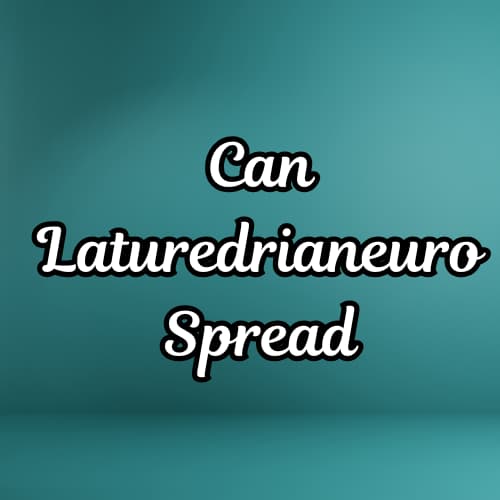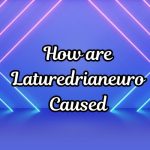Across the internet, people have started asking the same question can Laturedrianeuro spread? Some treat it as a medical mystery, while others call it a digital rumor. The confusion spread from the lack of verified information. To clear the doubts, it must to explain whether it can actually pass from one person to another.
How the “Spread” Theory Began
The idea that Laturedrianeuro could spread first appeared on short-form video platforms and small blogs. These posts claimed it passed “through neural waves” or “brain-to-brain contact.”
These posts spread quickly because:
- The word sounded complex and scientific.
- Visuals like fake brain scans created false credibility.
- Repetition made it look legitimate.
- Fear of new diseases attracts high engagement.
Within weeks, hundreds of accounts repeated the same information, even though none cited a single research source.
What Science Says About Spread
Medical science uses the term “spread” to describe transmission — how a condition moves from one host to another. For something to spread biologically, three things must exist:
- A cause — such as a virus, bacterium, or prion.
- Transmission method — like air, fluid, or touch.
- Clinical pattern — people developing similar symptoms in sequence.
In the case of Laturedrianeuro, none of these factors have been verified. There’s no pathogen, no lab confirmation, and no patient clusters.
Evaluating Spread Possibilities
| Mode of Spread | Description | Scientific Support |
| Airborne | Moves through droplets like flu | No reports or tests |
| Physical contact | Transfers via touch or saliva | No evidence |
| Environmental | Survives on surfaces or water | No studies |
| Digital (conceptual) | The idea spreads through social media | Thousands of examples |
So, while the concept of Laturedrianeuro spreads rapidly across the web, the condition itself does not — because no clinical body confirms it as real.
Why the Rumor Feels Convincing
Humans naturally react to alarming health terms. Several psychological triggers explain why this particular topic spread faster than truth:
- Scientific tone bias: Anything ending in “neuro” sounds credible.
- Repetition: Reading or hearing it many times gives it false authority.
- Visual suggestion: Edited brain images trick perception.
- Community echo: When friends share it, it feels more believable.
These triggers build emotional belief before logic steps in.
How Misinformation Amplified the Idea
The digital spread followed a familiar pattern seen in many online myths:
- A single post introduces fear (e.g., “New brain virus found”).
- Clickbait blogs copy the text for attention.
- AI content spinners rewrite the same sentences with minor changes.
- People share screenshots as “proof.”
This self feeding loop turns one line of fiction into a global query — “Can it spread?”
Comparing It With Real Neurological Diseases
| Condition | Cause | Can It Spread? |
| Alzheimer’s Disease | Protein buildup | No |
| Creutzfeldt-Jakob Disease | Prion infection | Rare |
| Viral Encephalitis | Virus (e.g., HSV) | Yes |
| Laturedrianeuro | Undefined | No evidence |
Real disorders have measurable biological markers. Laturedrianeuro doesn’t.
Why It Might Feel Like It “Spreads”
Some users online claim that after hearing about it, they began feeling similar symptoms — foggy mind, pressure, or dizziness.
That experience is known as nocebo response — the opposite of placebo.
When you expect harm, the brain can simulate physical sensations matching the fear. In other words, the “spread” happens mentally, not medically.
How to Respond to Online Panic
Anyone encounter alarming claims or videos about Laturedrianeuro, take a balanced approach:
- Pause before reacting emotionally.
- Search for original studies, not copied articles.
- Look at official sites (CDC, NIH, WHO).
- Avoid sharing sensational screenshots.
- Discuss health concerns only with professionals.
Calm reading habits protect you better than viral news.

Role of Digital Virality
While Laturedrianeuro can’t spread biologically, it’s a perfect case of digital contagion — an idea infecting minds through exposure.
Research shows fear-based content travels 60% faster online than neutral posts. Each repost reinforces curiosity and panic. This is why the term trends even without substance.
Think of it as a meme outbreak, not a medical one.
The Science Behind “Neural Contagion” Myths
Throughout history, society has linked brain conditions with mystery.
Terms like “brain rot,” “mind virus,” or “neural decay” appear often in fiction and pseudo-science.
Laturedrianeuro fits that pattern — sounding scientific while staying undefined.
The “neuro” ending creates a false association with diseases like Parkinson’s or dementia, which adds weight even when unrelated.
Expert Perspective
Neurology experts emphasize that for a disorder to qualify as spreading, it must meet one or more of these criteria:
- Laboratory-confirmed cause
- Epidemiological tracking of cases
- Identifiable carrier or host
- Consistent symptoms verified by clinicians
Since Laturedrianeuro meets none of them, it cannot be classified as infectious or contagious under any known framework.
How to Stay Healthy Regardless
Even though the word itself has no medical standing, maintaining strong neural health is always valuable. Here’s how:
- Eat nutrient-rich foods (fish, leafy greens, nuts).
- Sleep 7–8 hours every night.
- Limit caffeine and alcohol.
- Practice daily mindfulness or deep breathing.
- Keep consistent social contact to reduce isolation.
These actions strengthen the real nervous system — not the imaginary one described in viral posts.
The Real Takeaway
The only thing that “spreads” about Laturedrianeuro is the rumor itself.
It’s not contagious, not proven, and not medically acknowledged.
The online spread demonstrates how quickly fear grows when wrapped in scientific-sounding language.
Believing in unverified conditions can cause unnecessary stress and divert focus from genuine health concerns.
So, can Laturedrianeuro spread?
No — not in any biological or medical sense. There’s no pathogen, no transmission chain, and no data linking it to contagious behavior.
What does spread is curiosity — an example of how digital communication magnifies speculation into belief.
By approaching the topic calmly, verifying sources, and avoiding emotional headlines, readers protect themselves from misinformation.
The next time someone asks whether Laturedrianeuro spreads, the most accurate answer is simple:
“Only on the internet — not in real life.”

